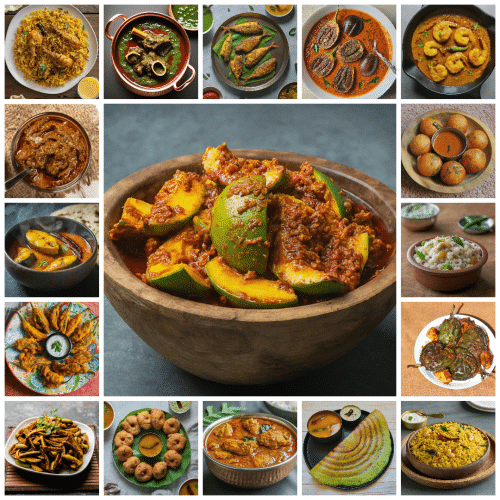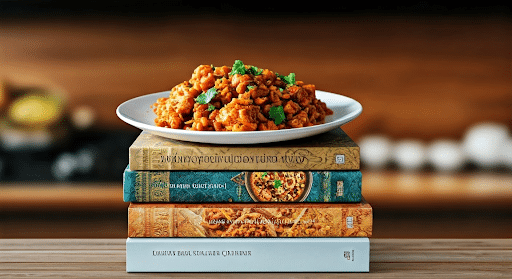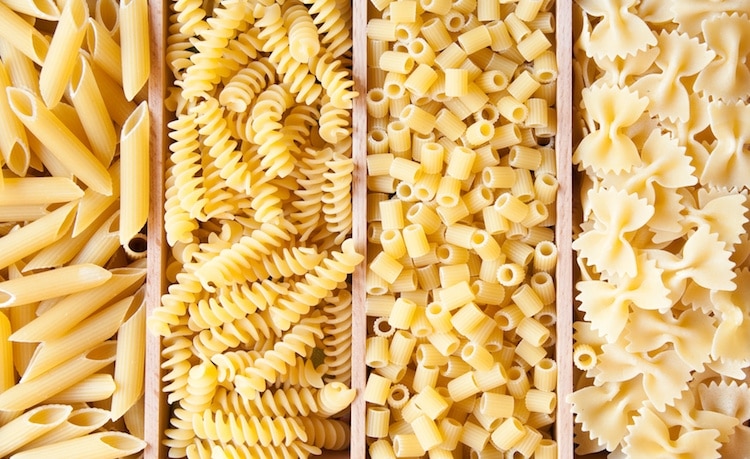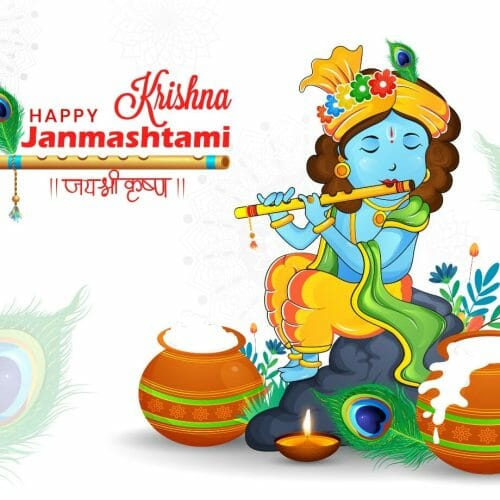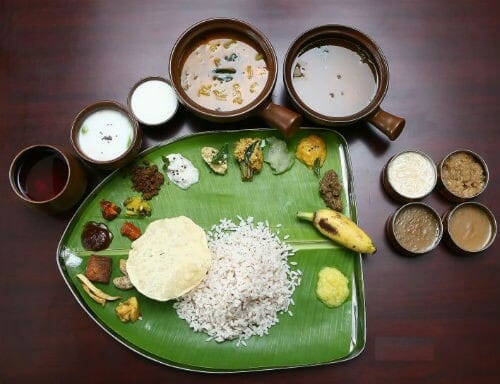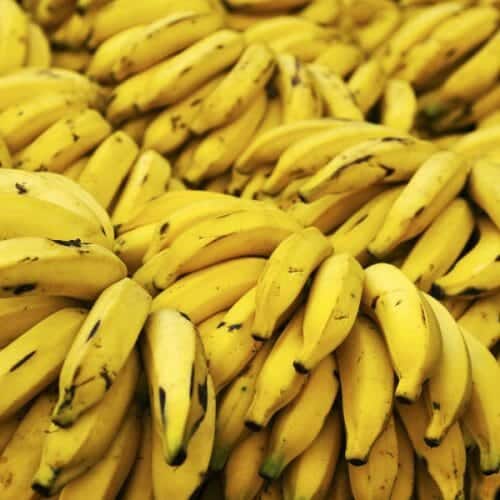Does the aroma of spiced kebabs wafting through a busy bazaar entice you? Do you find comfort in a steaming plate of Biryani, layered with basmati rice and yogurt-marinated meats? If yes, then welcome to the fascinating world of Pakistani food!
A potpourri of flavours imbued with traditions, Pakistani food comprises a variety of food items that are quick to prepare, spicy, and usually fried. It reflects the country’s rich history and regional diversity, with each region having its own unique snacks and fast foods.
From hearty meat curries to delicious flatbreads and an array of mouth-watering sweets, there’s something for everyone, especially in the southern region. Pakistani cooking also incorporates a variety of techniques, including grilling, slow cooking, and stir-frying, and utilizes dairy products such as yogurt and various forms of cheese.
Explore the diverse and delicious world of Pakistani recipes with our collection of quick, easy, and authentic dishes that have been tested to perfection.
22 Delicious & Irresistible Pakistani Food To Savour On
Influenced by neighboring countries — India, Afghanistan, and Iran, the Pakistani kitchen dishes out meals that are a blend of various cultures yet maintain a unique identity.
Generous use of spices like Garam Masala, Cumin Seeds, and Chili Powder give Pakistani dishes their distinctive flavour profiles, drawing inspiration from the diverse culinary traditions of the Indian subcontinent and Central Asia. However, unlike its neighboring countries, meat plays a much more dominant role in Pakistani cuisine, with dishes like the national dish of Pakistan, Chicken Biryani, showcasing the rich and flavourful use of meat in their cuisine.
Another popular aspect of Pakistani cuisine is the fusion of local and foreign recipes, such as the famous Pakistani Chinese cuisine found in urban centers. This blend of flavours and cultures makes Pakistani food a must-try for any food lover.
Indeed, Pakistani cuisine is a gastronomic delight waiting to be explored. Embark on this journey as we guide you through 22 must-try Pakistani best dishes!
Biryani
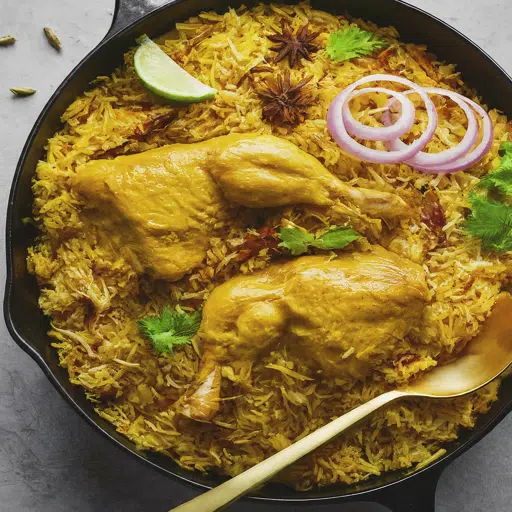
Pakistani Biriyani recipe
Biryani is not just a dish but an emotion for the people of Pakistan. Fluffy Basmati Rice interlaced with yoghurt-marinated meats, saffron milk, mint leaves, and temptingly tangy tomato gravy – Biryani is a riot of flavours that hits you in all the right places. Originating from the southeastern province of Sindh, Sindhi Biryani ranks high among all the varieties available across South Asia.
The term Biryani is derived from the Persian language – ‘birinj biryani,’ signifying fried rice. Once a royal indulgence, Biryani has now become a commoner’s delight, savored on special occasions like weddings, Eid, and family get-togethers. While it shares similarities with its Indian counterpart, Pakistani Biryani has its unique twist – the zesty sourness introduced by yogurt and dried plums playing with the spiciness, offering a complex medley of flavours.
Interestingly, Sindhi Biryani is the pakki variety, where all ingredients are pre-cooked and then layered in a pot, sealed, and slow-cooked over an open fire (on dum). This method of cooking results in a ‘Biryani‘ that is spicy yet balanced, rich, and deeply flavourful, much like Pakistani culture itself.
Nihari
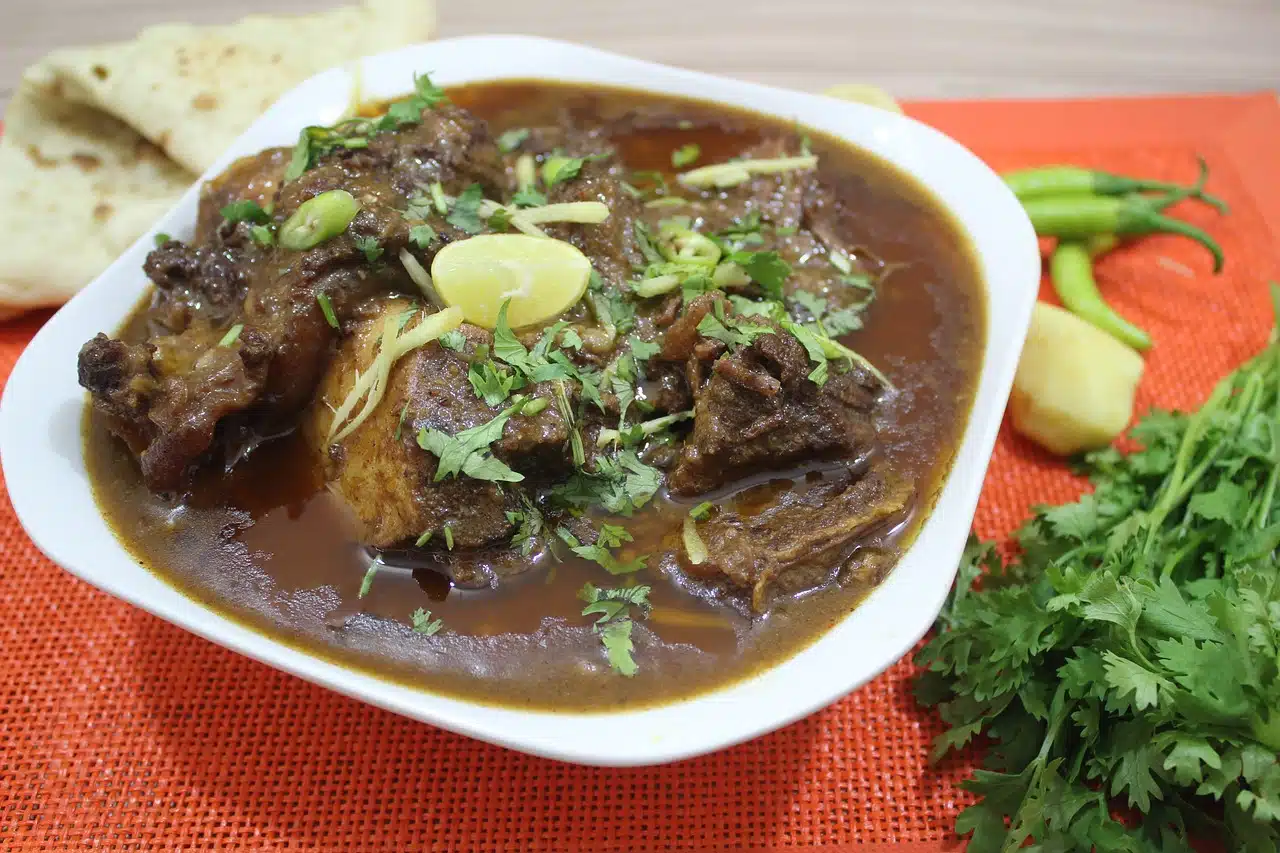
Pakistani nihari food
If one dish could encapsulate the essence of Pakistani food, it would be Nihari.
This dish brings forth the nation’s love for meat like no other does. Traditionally made with tough cuts of mutton or beef, Nihari undergoes slow cooking for hours until the meat, specifically goat meat, becomes tender and falls off the bone.
Another popular breakfast dish in Pakistan is halwa puri, a combination of sweet semolina pudding and fried bread served with a side of chickpea curry. This indulgent meal is known for causing feelings of extreme satisfaction, even to the point of laziness, for the remainder of the day.
The ingredients’ slow-cooking process releases all their flavours into the curry, creating a rich and robust gravy. The addition of Atta, stone-ground wheat flour thickens the curry, making it perfect for mopping up with a piece of warm naan.
Nihari’s namesake comes from the Arabic “nahar,” meaning “morning” due to the dish being traditionally served after sunrise prayers. However, today you can savor this delicacy at any time of the day or night.
While Nihari might have its roots in Old Delhi, it found a new home in Karachi post-Pakistan’s independence. Over the years, it has amassed such popularity that it’s now widely regarded as Pakistan’s national dish.
Haleem
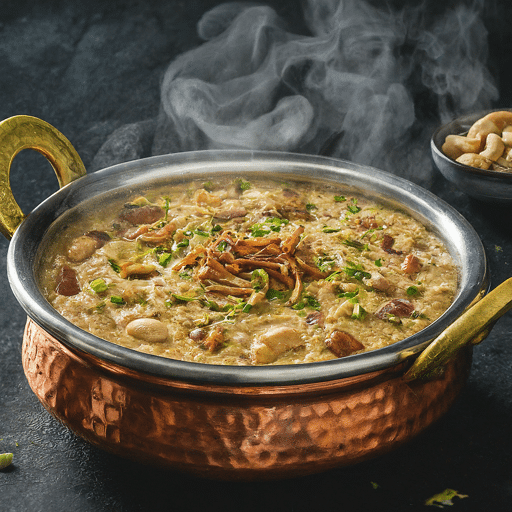
Haleem pakistani recipe
Travel south of Pakistan, and you’ll come across another gem called Haleem. Popular among Muslim communities across Pakistan, India, and Bangladesh, Haleem is a unique concoction that blends wheat (or barley), meat, and lentils with ample amounts of ghee, rose petals, nuts, and spices. It’s slow-cooked until the mixture turns thick and fragrant and then adorned with julienned ginger, crispy caramelized onions, and fresh cilantro before serving.
Originating in Iran, Haleem saw the light of day in Hyderabad, India, during the reign of the sixth Nizam, Mahbub Ali Khan. It later traveled to Karachi during the partition of India, carried by Muslims fleeing their homes for safer grounds. Today, Haleem enjoys immense popularity in Karachi and other regions of Pakistan, eaten warm during the colder months for its nutritious and hearty nature.
If you’ve got a palette for slow-cooked dishes and a hunger for appetizing, filling meals, Haleem might just be what your taste buds have been longing for.
Know how to make Haleem at home.
Karahi
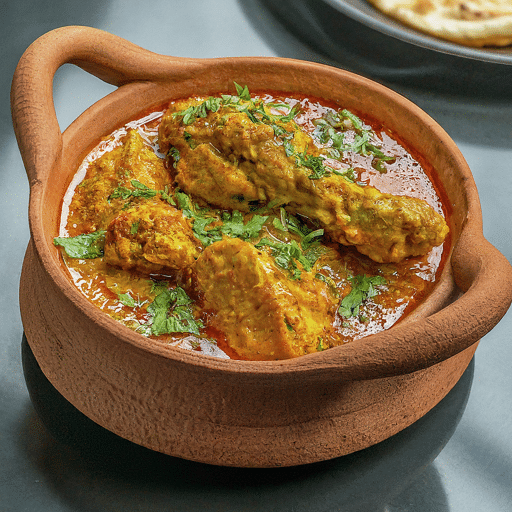
Karahi pakistani recipe food
When it comes to Pakistani food, ‘Karahi’ takes center stage. Named after the deep, round, and concave-bottomed cooking vessel it’s prepared in, Karahi represents a rich, fragrant, tomato-based curry cooked with chicken, lamb, or beef.
What sets Pakistani Karahi apart is the particular blend of spices used in its preparation. The whole spices such as Garam Masala, Cumin Seeds, fresh cilantro, Black Pepper are lightly fried in ghee to release their aroma before adding the meat and other ingredients, such as chicken tikka. The resultant gravy is fragrant, balanced and pairs well with naan or rice, making it a popular choice for lunch and an important part of Pakistani cuisine.
Chicken karahi, a variation of this dish, is also a popular lunch option in Pakistan.
The art of cooking Karahi has traveled through time, from the primitive kitchens of the Indus Valley Civilization, through the Greco-Bactrian rule, to your dinner plate. It embodies centuries of culinary experimentation and cultural amalgamation, making ‘Karahi‘ a delightful entrée to include in your dinner menu.
Read the complete recipe of Chicken Karahi at home.
Mutton Korma
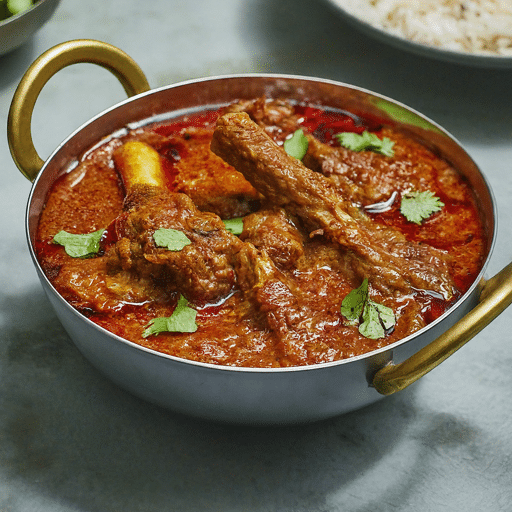
Pakistani mutton korma
Next on the list is Mutton Korma – a dish that perfectly exemplifies the Mughal influence on Pakistani food. A classic creation from the royal kitchens, Korma, whether made with mutton, chicken, or beef, is a big favorite among Pakistanis.
Mutton Korma involves slow-cooking bone-in mutton pieces in a velvety sauce base made with creamy yogurt, fried onions, and an array of aromatic spices. The use of black pepper adds a gentle heat, while the notes of mace and cardamom lend a sweet-spicy fragrance to the dish. It’s the long cooking hours that allow the meat to soak up all the flavours from the silky, nutty sauce.
When served alongside delicate sheermal (sweet flour bread) or fluffy naan, Mutton Korma takes you on an unforgettable culinary journey. One spoonful of this rich and creamy delight will transport you back in time, offering you a slice of the royal Mughal feast.
Know how to make Mutton Korma step by step.
Chapli Kebab
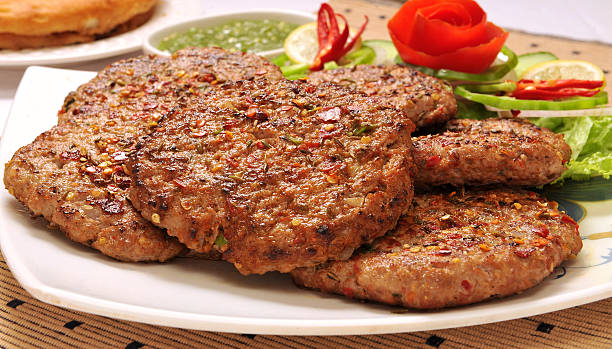
Chapli Kebab pakistani recipe
For lovers of grilled food, Pakistan offers an impressive variety of kebabs, and ‘Chapli Kebab’ is indeed a showstopper. Masterfully blending minced beef with tomatoes, onions, pomegranate seeds, green chili peppers, and a host of spices, Chapli Kebab is an embodiment of vivacious flavours.
Brought to the plate straight off the skillets of Peshawari street vendors, Chapli Kebab gets its name from the local language ‘chaprikh,’ meaning flat. True to its name, this kebab bears a flat, round shape and is commonly savored with hot naan bread and fresh salad.
Whether you visit Peshawar, the capital of the Khyber Pakhtunkhwa province, or stroll through the food streets of Karachi, you are likely to find locals and tourists alike relishing these flavourful kebabs. Such is the charm of ‘Chapli Kebab‘ – an ingredient-rich, spice-laden delicacy that can be enjoyed anytime, anywhere!
Sheer Khurma
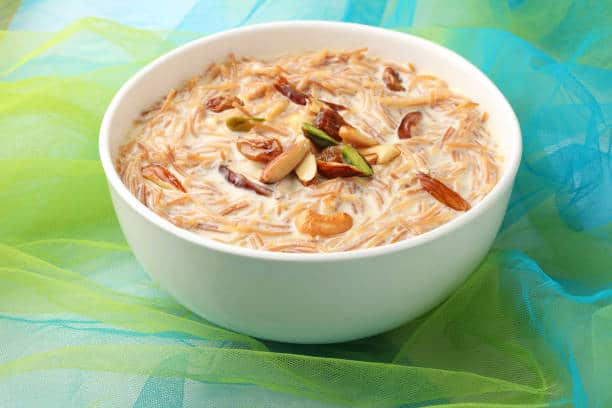
Sheer khurma pakistani food
Known as Sheer Khurma, this dessert is just what you need to satisfy your sweet cravings. It is a deliciously traditional pudding made by slowly boiling milk until it thickens. The dish owes its incredible flavour to an array of ingredients including pistachios, almonds, sweet dates, raisins, and cardamom pods.
The sweetness derived from the dates and raisins blends perfectly with the flavours of the spices and nuts. It’s important to make sure you don’t add too much sugar to Sheer Khurma as the natural sweetness from the dried fruits can easily overpower the dish.
Through centuries, ‘Sheer Khurma,’ with its exotic taste and delectable texture, has become a preferred sweet dish across Pakistan. Whether it’s a regular day or a special occasion, a bowl of this silky pudding can lend a perfect finishing touch to any meal.
Read this Sheer Khurma recipe
Falooda
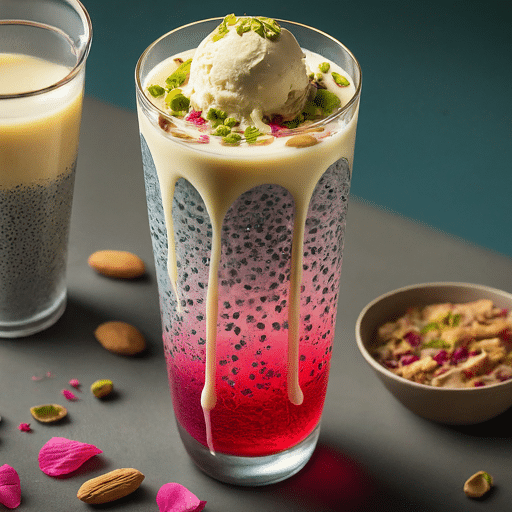
Falooda- pakistani food recipe
Another sweet wonder from Pakistani cuisine that deserves a mention is Falooda – a dessert-beverage hybrid that bridges the gap between the two. A layered concoction of vermicelli noodles, milk, basil seeds, and rose syrup, Falooda is a treat both for the eyes and the palate.
Topping this inviting dessert are chopped nuts like pistachios or almonds along with a generous scoop of cold vanilla ice cream. The traditional rose syrup Falooda, with its pink hue and delicate flavour notes, continues to be a favorite, although variations like mango and strawberry are fast gaining popularity.
Perfect for a hot summer day, ‘Falooda’ offers a blend of ingredients that takes your taste buds on a joyride of flavours. It’s a must-try for those who love experimenting with food.
Know how to make Falooda at home.
Zarda
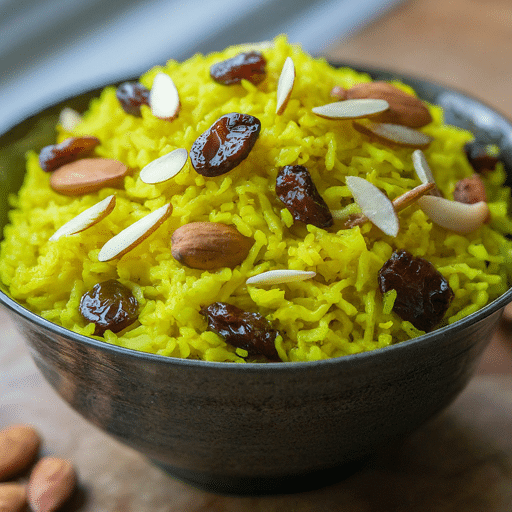
Zarda- pakistani food recipe
Rice may commonly find a place in savory preparations, but in Pakistan, it also forms the base for a popular dessert – the Zarda. This traditional dish is made with rice, sugar, milk, and flavoured with saffron and cardamom pods.
The dish draws its name from the Persian word zard, meaning “yellow,” indicating the golden color achieved through the use of saffron and food coloring. Zarda is a popular dessert not only in Pakistan but throughout the Middle East, India, and Asia.
With ‘jaggery’ or sugar sweetening the creamy rice, and chopped nuts, raisins, and rose petals lending an added crunch, Zarda creates a delightful symphony of flavours and textures. The bright hues make Zarda a favored choice for festive occasions, but it’s not uncommon to find it being served for breakfast or as a sweet accompaniment to a spicy biryani.
So, when you’re in Pakistan, do give the ‘Zarda’ a try – you might find yourself falling in love with its exotic sweetness.
Gulabi Chai
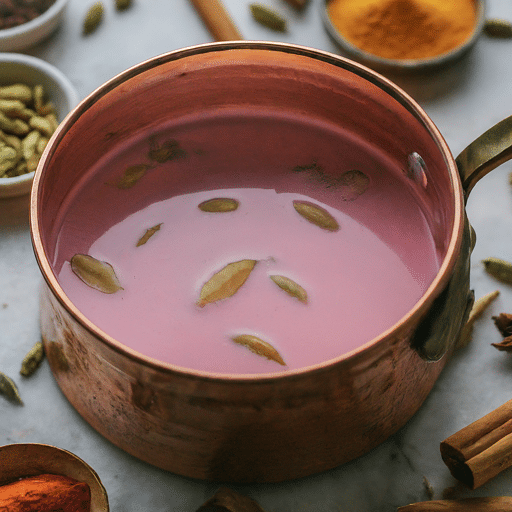
Pakistani gulabi chai
Speaking of Pakistani food traditions, how can we miss out on Gulabi Chai! Translating to ‘pink tea,’ this traditional beverage is loved for its soothing flavours and pastel hue. Made with tea leaves, milk, baking soda, and salt, Gulabi Chai makes for a refreshing evening drink or a morning pick-me-up.
Also known as ‘Kashmiri Chai,’ this distinctive tea brings forth the simplicity and elegance of Kashmir in every sip. It exudes a mild floral aroma that further enhances its appeal. The tea isn’t just a sensory delight – it also carries a cultural significance, often prepared for special occasions and served to guests.
Even if you find yourself in the bustling cities or quiet countryside of Pakistan, you will invariably come across people sipping this enticing pink tea, indulging in joyous conversations. Undeniably, Gulabi Chai is a celebration of life, embraced and appreciated by the locals with love and warmth.
Mango Lassi
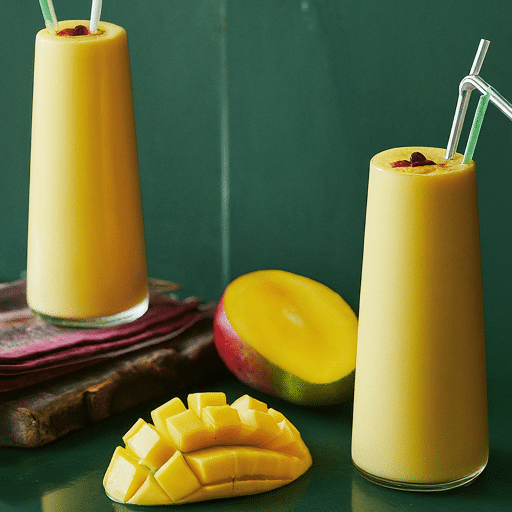
Mango lassi pakistani food
Among the myriad of beverages enjoyed in Pakistan, ‘Mango Lassi’ holds a special place. A refreshingly delicious blend of mango, yogurt, and sugar, this traditional drink offers a perfect balance of flavours. The velvety sweetness of mangoes harmoniously fused with creamy yogurt creates a delightful taste that feels like a blissful summer’s day in your mouth.
Enjoyed widely during the scorching summer months, ‘Mango Lassi’ is more than just a beverage. It’s a symbol of the Pakistani spirit of joy and celebration that welcomes every season with open arms.
Whether paired with a savory meal or chilled on a hot afternoon, a glass of Mango Lassi can conjure a refreshing ambiance, bringing an instant smile to your face.
Next time you visit Pakistan, do not forget to try some of the country’s delicious fresh fruits, such as mangoes, papayas, bananas, watermelon, apricots, and apples.
Read our complete recipe to prepare Mango Lassi at home.
Saag
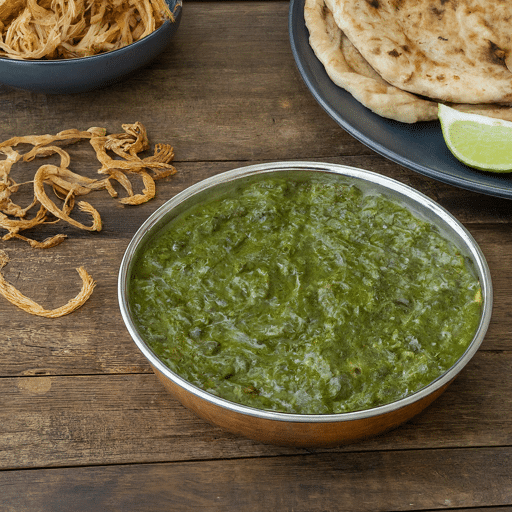
Pakistani Saag recipe
When it comes to vegetable dishes in Pakistan, ‘Saag’ is much cherished. Made from mustard leaves, methi, and spinach, Saag is a nutritious, green curry that imparts earthy flavours enriched with spices. This dish, a staple across many Pakistani homes, draws its roots from rural Punjab, where fresh green vegetables are a household essential.
While traditional preparations see Saag being slow-cooked over a charcoal flame in earthen pots, today’s quick-paced life has replaced these methods with pressure cookers and ‘Instant Pot’ cooking. However, the switch in cooking methods has not altered the authentic taste that’s been passed down through generations.
Saag pairs well with Makki ki Roti (cornmeal flatbread) and is often served dolloped with a hearty amount of Ghee. A plate of warm ‘Saag’ laced with the goodness of green veggies and the richness of desi ghee is comfort food at its best, offering a tasteful glimpse into the soul of Pakistani cuisine.
As a result of lifestyle changes, health trends, and new dietary research being published, traditional ingredients such as masala (pre-mixed and ready-to-use) and ghee (clarified butter)—with its health benefits and high smoke point —have been increasingly popular. It can also be served as a delicious side dish to any meal, adding a burst of flavour and nutrition.
Dowdo
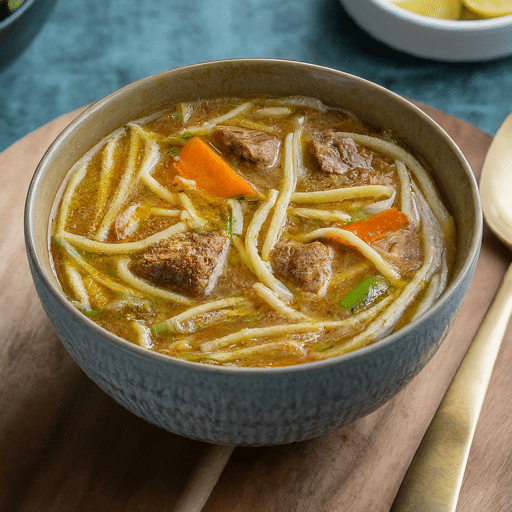
pakistani dowdo soup
Stepping away from the mainstream dishes, let’s take a detour to Western Pakistan, where a unique soup-like dish called ‘Dowdo’ awaits us. Brewed with wheat dumplings and various vegetables and spices, Dowdo is a common feature in the winters of the Hazara and tribal regions.
The key to nailing this delicate dish lies in the slow cooking of the ingredients, allowing them to release their unique flavours into the broth. Once served, Dowdo carries a wonderful harmony of taste and aroma that can warm you up on a cold day.
People in western Pakistan often have it with traditional flatbread. A bowl of ‘Dowdo,’ paired with freshly baked bread, cooks up an irresistible meal that feeds the body and the soul alike. The hearty flavours of Dowdo promise a culinary experience that’s as warming as a hug on a chilly winter’s day.
Peshwari naan
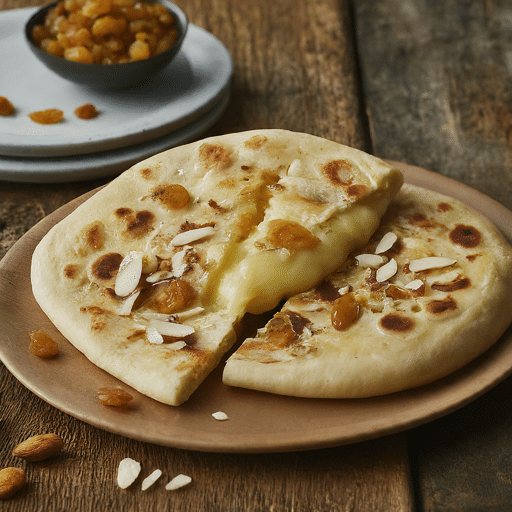
Peshawari Naan recipe
Peshawari Naan finds its roots in the north-western province of Pakistan, Peshawar. Known for its peculiar taste and elongated oval shape, this bread is stuffed with a sweet filling consisting of dried fruits, slivered nuts, brown sugar, and creamy butter. The hint of warming spices adds to the exotic flavour profile.
Historically, ‘Peshawari naan’ was savored at breakfast, but today, it enjoys global popularity and can be relished at any time of the day. Whether served steaming hot with a bowl of meat-rich curry or enjoyed solo, this fluffy bread has achieved a cult status among global bread varieties.
Upon biting into a piece of Peshwari Naan, you are welcomed with a burst of sweetness that nicely balances the wheat’s nuttiness. It makes for an intriguing gastronomical delight, promising a sublime after-taste that leaves you yearning for more.
Paya (or Paaya)
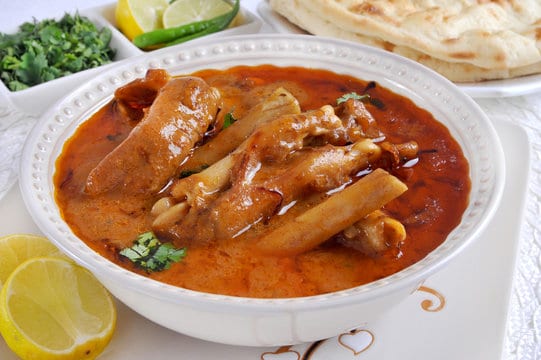
Pakistani recipe paaya soup
From the pantheon of exotic Pakistani dishes comes yet another flavourful preparation called ‘Paaya’ or ‘Paya.’ This traditional dish is prepared with the slow cooking of trotters (feet) of either goat or cow in a broth until the meat is falling off-the-bone tender.
The trotters lend depth and robustness to the gravy, making it rich and savory. Combined with an array of flavoursome spices, this dish speaks volumes about the culinary prowess of Pakistani chefs who can turn even the most unconventional cuts of meat into delicacies.
To truly appreciate ‘Paya,’ some good old ‘naan’ for mopping up the sumptuous sauce is a must. Once you take a bite, the taste of the initially daunting-looking Paya can astound you with its scrumptiousness. Indeed, Paya is not for the faint-hearted, but if you dare to venture, it’s a path paved with unparalleled culinary bliss.
Maash ki daal
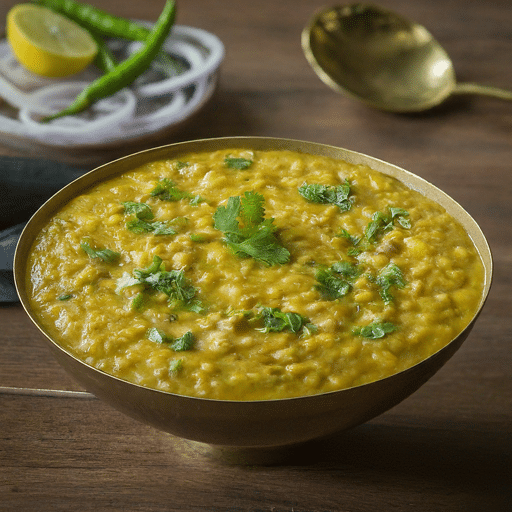
Maash ki daal recipe
Pakistani food is also a treasure-trove for vegetarians, and ‘Maash ki Daal’ proves this. A comforting blend of split urad dal (black gram lentils), tomatoes, garlic, ginger, and handpicked spice powders, Maash ki Daal is a food for the soul!
The distinct flavour of black gram lentils, enhanced with zesty lemon juice, spicy green chili peppers, and fragrant cilantro, creates a symphony of tastes that’s both exciting and comforting.
Traditionally, it’s served with tangy homemade achaar (pickle), a refreshing chopped salad and a freshly made roti, offering a wholesome and nutritious meal.
Whether savored as a main vegetarian dish or paired with a meat-based curry, ‘Maash ki Daal’ is a dish that carries the straightforward yet rich essence of a Pakistani homemade meal. It pairs perfectly with tangy and spicy chana masala, finished off with a sprinkle of chaat masala and a drizzle of hot oil, making it a must-try dish for anyone looking to experience the flavours of Pakistani food.
Lamb Kofta Salan
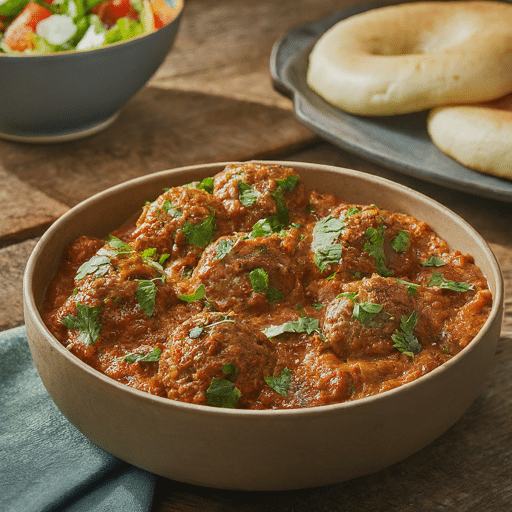
Lamb kofta salan recipe
For those who are all about hearty meat-based dishes, ‘Lamb Kofta Salan’ is a must-try. A dish that begins with spherical ground lamb meatballs being prepared and then simmered in a thick, buttery sauce.
This dish uses spices such as garam masala to give it a rounded flavour that compliments the tender lamb, making it the perfect main dish for any Pakistani meal.
Packed with aromatic spices and succulent minced lamb, these koftas are a delight to savor, but what truly sets the ‘Kofta Salan’ apart is the spicy gravy that brings the whole dish together. The meatballs absorb the tangy and spicy notes of the curry, offering a mouthful of flavours with every bite.
So, be it a lunch spread or a dinner feast, a platter of ‘Lamb Kofta Salan’ can turn any ordinary meal into a spiced-up culinary adventure. Paired with hot basmati rice or flaky bread, it’s a dish that promises an unforgettable gastronomic experience.
Chapshurro (or Chapshoro)
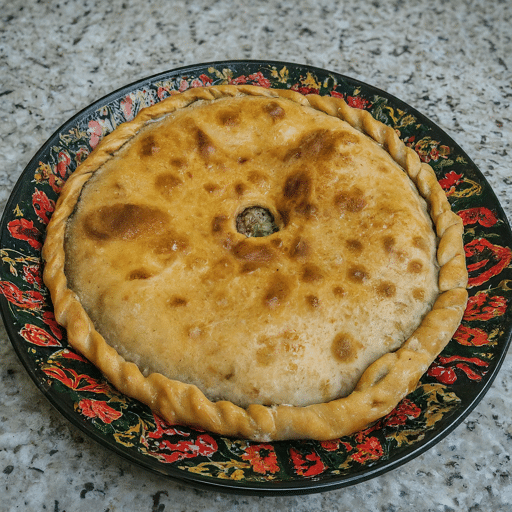
Pakistani recipe – chapshoro
Chapshurro or Chapshoro, a delicacy hailing from the mountainous region of Gilgit Baltistan, is Pakistan’s flavourful answer to pizzas worldwide. Chapshurro layers minced meat fillings of choice seasoned with onions, fresh herbs, and a host of spices between two thin sheets of dough. It’s then cooked until golden-brown, giving it a crispy exterior that perfectly contrasts its juicy, spice-saturated interior.
The uniqueness of Chapshurro also lies in the choice of meat used. In regions like Hunza Valley, where Yak meat is abundant, Chapshurro, which is cooked with Yak meat, is a common sight. However, for those without access to Yak meat, mutton and beef are fantastic alternatives to explore.
Be it enjoyed as a stand-alone treat or indulged in with a refreshing salad, ‘Chapshurro’ offers a peek into local Pakistani tastes that’s simultaneously unique yet universally addicting – a feast not just for your palate but also your senses!
Paratha
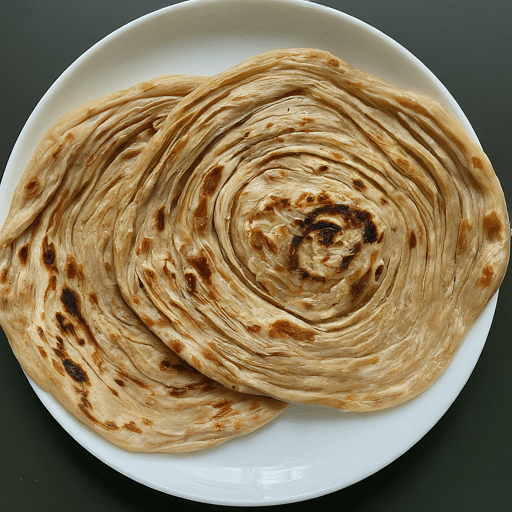
Pakistani paratha recipe
Another popular element of Pakistani cuisine is ‘Paratha,’ a flat, layered bread prepared with wheat flour and ghee. Originating from Punjab, a paratha starts the day for many in the region. Over time, this simple yet filling bread has found its way to breakfast tables across the country.
Crispy on the outside and soft within, parathas, whether plain or stuffed with various fillings, are an indulgent delight. Variations of this bread include ‘Aloo ka Paratha’ (potato stuffed paratha), ‘Mooli ka Paratha’ (radish stuffed paratha), and ‘Qeemah ka Paratha’ (ground meat stuffed paratha), to name a few.
Whether smeared with a pat of butter or paired with spicy pickles, curd, or a slice of mango pickle, a ‘Paratha’ is more than a mere ingredient; it’s an integral part of the culinary experience that is Pakistani food.
Bun Kebab
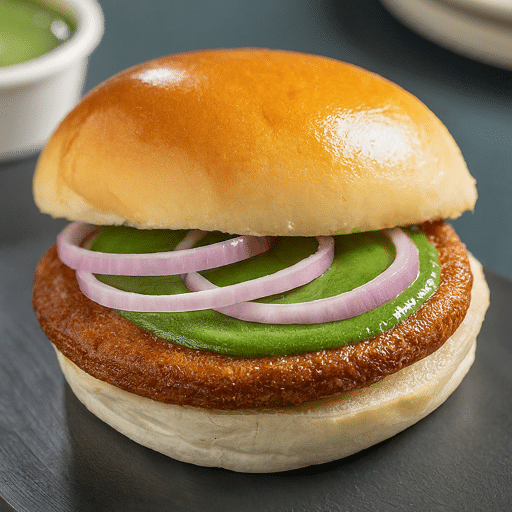
Pakistani Bun Kebab
When exploring the street-food culture of Pakistan, the ‘Bun Kebab’ stands as a shining example. Encompassing a delicious kebab enveloped in a soft bun, this fast-food delicacy is a favorite on-the-go snack for many Pakistanis.
Typically, these flavourful kebabs are made from minced mutton or beef and flavoured with spices before being shallow-fried. The bun, on the other hand, is usually smeared with chutney or ketchup. Some might even add a fried egg or slice of cheese for that extra edge.
Whether you’re on the busy streets of Karachi or the quiet lanes of rural Pakistan, Bun Kebab is one food that promises a burst of classic flavours with each bite. So, next time you’re in Pakistan, grab a ‘Bun Kebab’ or seekh kebab from the nearest street vendor and take a bite of the local street food culture.
Kabuli Pulao
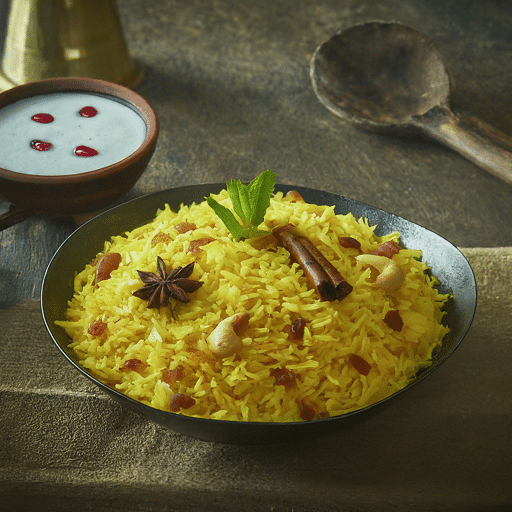
Kabuli pulao – pakistani food
If you enjoy elaborate rice dishes, Kabuli Pulao will definitely pique your interest. Often regarded as the national dish of Afghanistan, this rice-based delicacy enjoys significant popularity in the Pashtun regions of Western Pakistan.
Kabuli Pulao is a popular dish in Pashtun dominated regions such as the Tribal Areas, FATA, and Khyber Pakhtunkhwa province in North-West Pakistan. And let’s not forget the generous handful of raisins and julienned carrots that add a sweet crunch, making the dish all the more interesting.
Prepared with love and served with a heart full of hospitality, ‘Kabuli Pulao’ is a testament to the rich gastronomic heritage of Pakistan that seamlessly marries different flavours, textures, and cultures.
Conclusion
Journeying through the palette of Pakistani food, we find a series of dishes that echo the country’s multifaceted cultural tapestry. From meaty curries and flavourful kebabs to aromatic rice dishes and succulent desserts, Pakistani cuisine displays a charm that is hard to resist.
Whether you fancy a spicy Biryani, a refreshing Mango lassi, or a creamy Sheer Khurma, there’s always something in Pakistani cuisine to satiate your cravings. Each dish shares a story of the country, narrating tales of centuries-old traditions, foreign influences, and regional diversity.
So, when you are in Pakistan next, be ready to embark on a culinary extravaganza that expertly blends time-honored recipes with contemporary tastes. Indeed, Pakistani food is a testament to the nation’s rich heritage and devouring palate that beckons food lovers from all corners of the globe.
Frequently Asked Questions
Are Pakistani foods mainly Non-vegetarian?
Yes. Given the country’s majority Muslim population, Pakistani cuisine is strongly inclined towards meat-based dishes. Lamb, beef, chicken, and goat feature prominently in many traditional dishes. However, the cuisine also includes a variety of vegetarian dishes cooked with lentils, pulses, and fresh local vegetables.
Is Pakistani cuisine reflective of its diverse culture?
Absolutely! Pakistani cuisine is a melange of flavours reflecting the diversity of the regions within Pakistan. From Sindhi Biryani and Balochi Sajji to Punjabi Saag and Peshawari Naan, Pakistani food showcases the cultural variety of the country infusing it into dishes that are loved worldwide.
What is Pakistan national food?
Pakistan’s national food is biryani. Biryani is a flavourful and aromatic rice dish made with a mix of spices, meat (such as chicken, beef, or mutton), and sometimes vegetables. It is a popular and beloved dish in Pakistan, enjoyed by people of all ages across the country.







